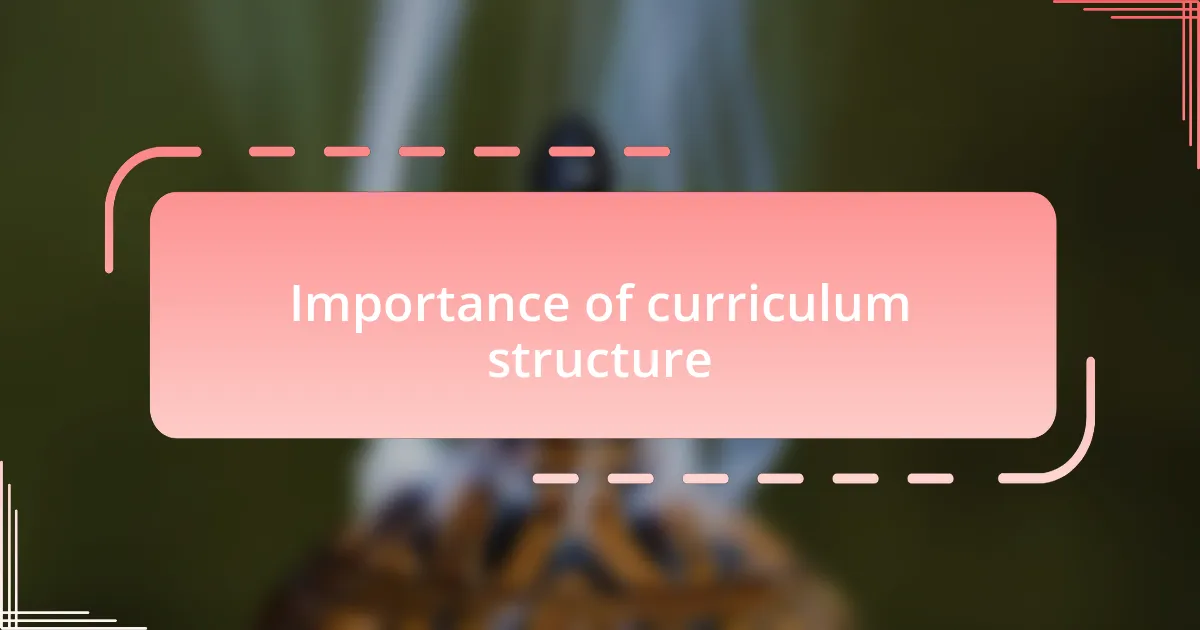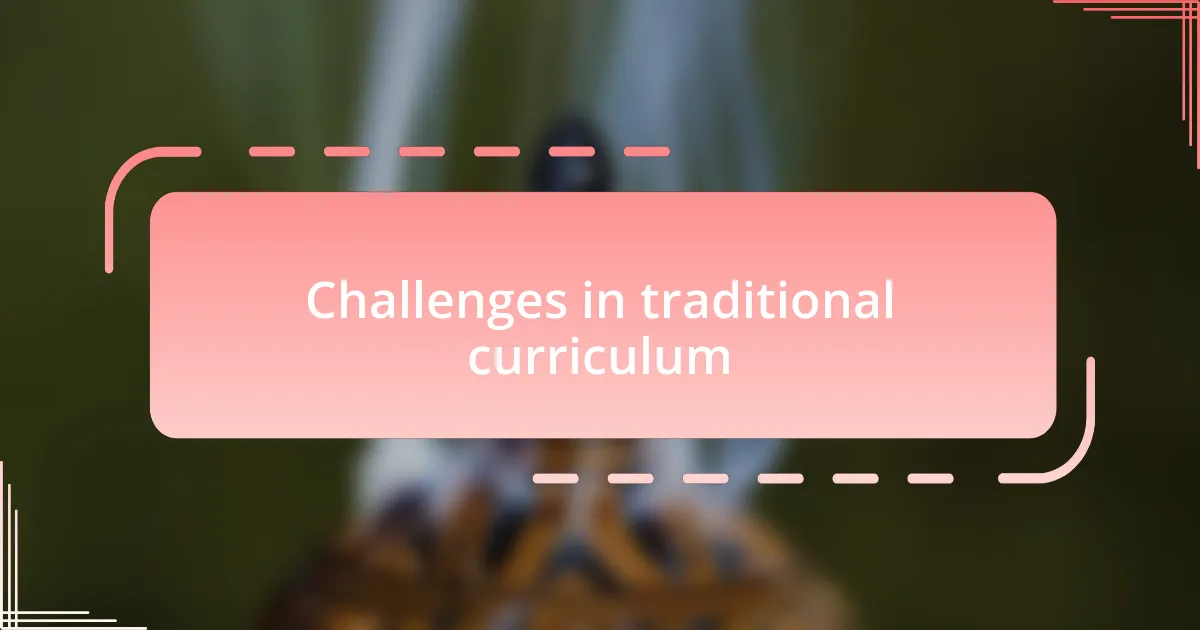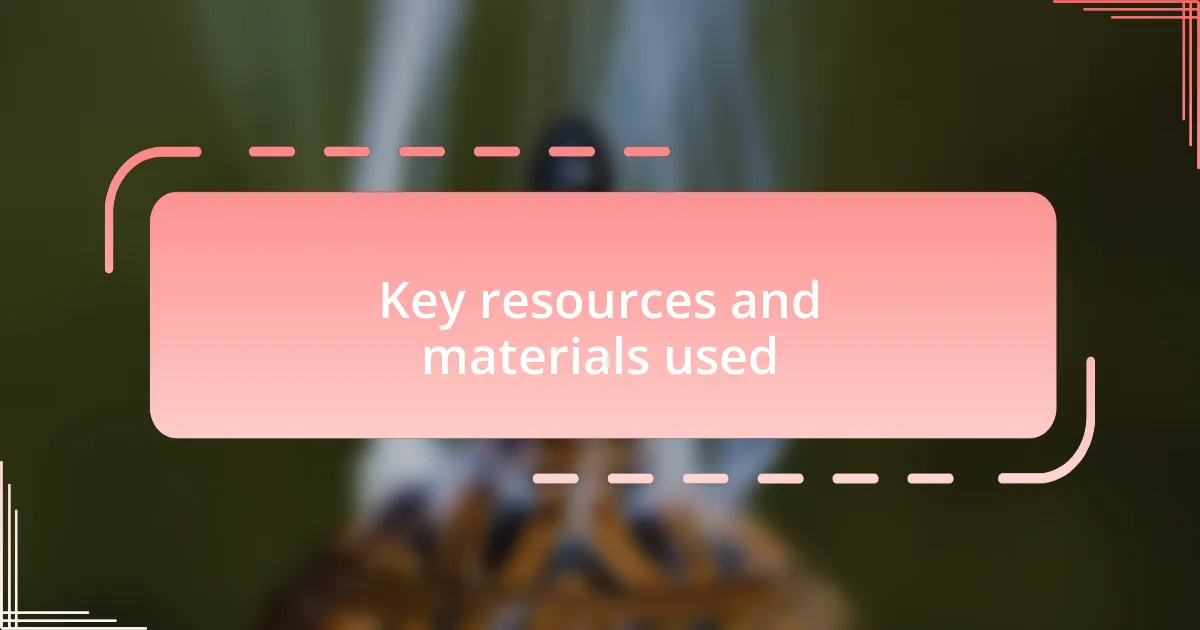Key takeaways:
- Religious education promotes understanding and empathy, encouraging students to explore both their own beliefs and those of others.
- A well-structured curriculum fosters inclusivity and critical thinking, allowing students to engage deeply with diverse perspectives.
- Traditional curricula often lack flexibility, emotional relevance, and cultural connections, leading to student disengagement.
- Restructuring the curriculum can create a more inclusive, adaptable, and responsive learning environment that addresses students’ lived experiences and societal issues.

Understanding religious education principles
Understanding the principles of religious education is like opening a window into the diverse tapestry of beliefs that shape our world. I remember my early days in the classroom, excited yet overwhelmed by the vast array of traditions and worldviews. Each lesson became an opportunity not just to teach, but to foster a sense of respect and empathy among students. Have you ever considered how a single story can illuminate values and shared humanity?
At its core, religious education is about cultivating understanding and dialogue. It encourages students to explore their own beliefs while also engaging with those of others. I noticed that when I created a space for open conversation, students were more willing to express their thoughts and challenge their perspectives. Can we truly grasp our own faith if we do not take the time to understand the beliefs that differ from ours?
Another key principle is the emphasis on critical thinking. I often encourage students to question and analyze the texts and traditions they encounter. This reflection not only enriches their learning experience but also allows for deeper connections to their own lives and values. How often do we stop to ponder the implications of what we believe? Exploring religious education principles should lead us to greater self-awareness and insight into the world around us.

Importance of curriculum structure
Curriculum structure is crucial in religious education because it provides a clear framework for exploring complex ideas. When I first developed my curriculum, I realized that a well-organized structure helped students navigate various belief systems without feeling lost. It’s fascinating how a coherent layout allows them to build on their knowledge, making connections that deepen their understanding. Have you ever noticed how much easier it is to engage with a topic when there’s a logical flow?
Moreover, a thoughtfully designed curriculum promotes inclusivity, ensuring that diverse perspectives are represented. I vividly remember a lesson where I integrated different cultural practices into the syllabus, and students were excited to share stories from their own backgrounds. This exchange not only enriched our discussions but also created a welcoming environment where everyone felt their voice mattered. Don’t you think fostering such connections is essential in a religious education setting?
Finally, a structured approach to the curriculum enables teachers to assess students effectively. I’ve found that when I have clear learning objectives and milestones, it becomes easier to gauge students’ progress. This clarity not only benefits my teaching but empowers students to take ownership of their learning journey. Isn’t it reassuring to see growth when the path is well-defined?

Challenges in traditional curriculum
One of the most significant challenges in traditional curriculum approaches is their rigidity. I remember a particular instance when a student expressed confusion about how a specific tenet of a religion contradicted another’s principles. Despite their eagerness to explore this pivotal discussion, the curriculum offered little room for deviation. Have you encountered that moment when a student’s genuine curiosity is stifled by a strict outline? It’s a frustrating reality that often leads to disengagement.
Additionally, these curricula frequently overlook the emotional and experiential aspects of religious education. I once had a student who had recently lost a loved one and sought solace in exploring grief through various spiritual perspectives. Yet, the prescribed materials were largely theoretical and didn’t resonate with their immediate needs. Doesn’t it feel disheartening when educational resources fail to address the human experience?
Moreover, traditional curricula often lack cultural relevance, making it difficult for students to relate to the content. I can recall a time when a lesson on ancient texts didn’t connect with my diverse class. Many students sat quietly, struggling to see the relevance of these teachings in their modern lives. Isn’t it vital that we recognize and engage with their backgrounds to make the learning process meaningful? This disconnect highlights the urgent need for a more dynamic approach in religious education.

My reasons for restructuring
Transforming my curriculum was driven by the need to create a more inclusive environment for every student. I recall a classroom discussion where a student passionately shared their struggles with faith in light of personal experiences. It struck me that if my curriculum could better reflect their lived realities, we could foster deeper connections and understanding. Have you ever realized that education can be a bridge when it’s accessible and relatable?
Another compelling reason for my restructuring was the desire to cultivate critical thinking among my students. I remember a situation where we tackled a sensitive topic related to ethics and morality within various religious contexts. I found that if I encouraged open dialogue rather than adhering to a strict doctrine, students felt empowered to voice their opinions and explore diverse perspectives. Isn’t it refreshing when students become engaged thinkers, shaped by discussion rather than rote memorization?
Finally, I aimed to ensure my curriculum was adaptable and responsive to emerging societal issues. There was a recent incident where a current event sparked questions about religious tolerance. Realizing I had the flexibility to pivot the lesson in real-time allowed students to draw connections between their studies and the world around them. Don’t you think that timely relevance can enhance the educational experience, making it more impactful and significant for students?

Key resources and materials used
In reshaping my curriculum approach, I actively sought out a diverse range of texts and multimedia resources. For instance, I introduced graphic novels that tell stories of faith and struggle, which not only captivated my students but also provided them with relatable contexts. Have you ever noticed how a visual medium can spark thoughtful conversations? It’s amazing to see students absorbed in stories that mirror their own experiences.
I also incorporated a variety of religious texts, both canonical and non-canonical, to illustrate the rich tapestry of beliefs and practices. One memorable lesson revolved around selected verses from different religious traditions, prompting students to consider their meanings and implications across cultures. I found that using primary sources in this manner invites students to think critically about interpretations—have you experienced the depth of understanding when students engage directly with the material?
Furthermore, I utilized online platforms to host virtual discussions with guest speakers from various faith backgrounds. This not only expanded students’ perspectives but also humanized the subject matter. I can recall a particular session where a panelist shared their personal journey with spirituality, leading to an animated debate on the intersection of faith and identity. Isn’t it eye-opening to facilitate real conversations that challenge preconceived notions and blend theory with personal experience?